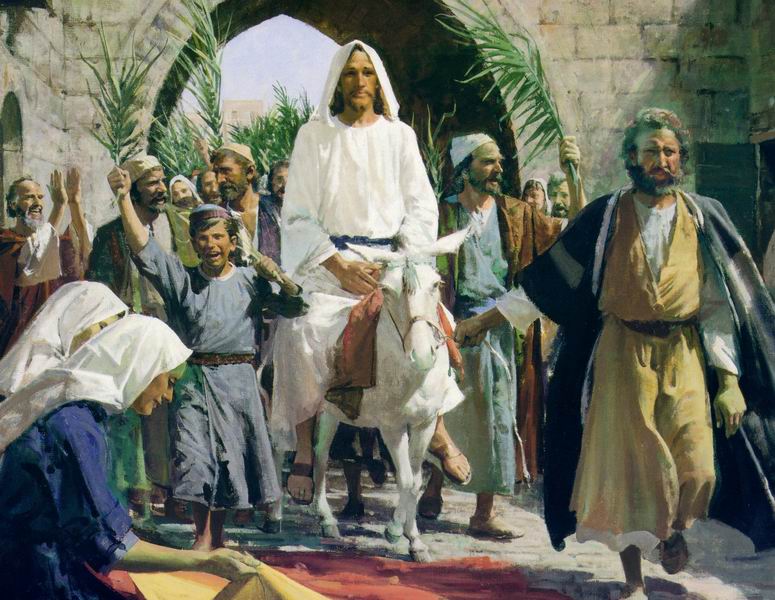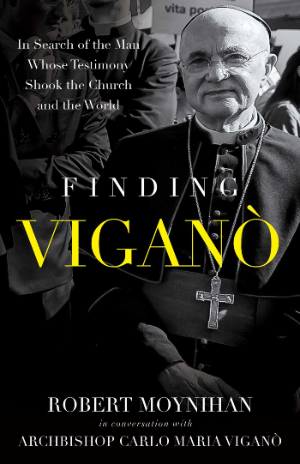Sunday, March 28, 2021
Palm Sunday

Jesus’ Triumphal Entry in Jerusalem on a Donkey (Source of the above image here)
Now when they drew near to Jerusalem and came to Bethphage, to the Mount of Olives, then Jesus sent two disciples, saying to them, “Go into the village in front of you, and immediately you will find a donkey tied, and a colt with her. Untie them and bring them to me. If anyone says anything to you, you shall say, “The Lord needs them,” and he will send them at once.’ This took place to fulfill what was spoken by the prophet, saying, ‘Say to the daughter of Zion, “Behold, your king is coming to you, humble, and mounted on a donkey, and on a colt, the foal of a beast of burden.” —Gospel of Matthew, Chapter 21:1-5
And Jesus found a young donkey and sat on it, just as it is written, “Fear not, daughter of Zion; behold, your king is coming, sitting on a donkey’s colt!” His disciples did not understand these things at first, but when Jesus was glorified, then they remembered that these things had been written about him and had been done to him. —Gospel of John, Chapter 12:14-16
“Rejoice greatly, O daughter of Zion! Shout aloud, O daughter of Jerusalem! Behold, your king is coming to you; righteous and having salvation is he, humble and mounted on a donkey, on a colt, the foal of a donkey.” —Book of the Prophet Zechariah, Chapter 9:9
Today we celebrate the entrance of Jesus into Jerusalem.
On this day 1,988 years ago, or thereabouts, in 33 A.D. (we estimate), the heir to the throne of David — I take it from the genealogies of Scripture and the unanimous testimony of Tradition that Jesus was in fact of the actual Davidic line, according to the flesh, that is, that he had a legitimate claim to the kingly throne of David his actual ancestor — entered Jerusalem, the capital city, riding on a young donkey, the foal of an ass.
Many of the city’s people celebrated his arrival, spreading palm branches before him, recognizing the Messianic nature of his arrival in the City of David.
And so we celebrate on this day the seeming “high point” of Jesus’ earthy ministry.
Jerusalem received him.
Israel recognized him.
He was no longer hidden, speaking privately in Galilee to his disciples, often in mysterious and paradoxical parables that they did not understand, he was revealed in public.
The kingdom, longed for by so many for so long, was finally near.
The king had come at last.
But four days later the “Hosannas” of the people would be transformed into treachery, betrayal, arrest, trial, condemnation, and, on the morning of the 5th day, the morning of Good Friday, the stumbling walk to Golgotha, the place of the skull, and crucifixion, and death.
So passed from this world the carpenter from Nazareth, dashing many hopes.
Jesus died flanked by two thieves, accompanied at what appeared to be his final defeat by just one of his 12 closest disciples, the Apostle John. Also present (along with others who were not close disciples and are not named) were four women: three Marys, one of them Mary his mother, whose heart was pierced with sorrow as she beheld the suffering of the son she loved, hanging from the cross just a few feet away, yet out of all reach of her maternal care; and the other two Mary, Mary the wife of Cleopas and Mary Magdalene; and also his mother’s (unnamed) sister (“Near the cross of Jesus stood his mother, his mother’s sister, Mary the wife of Clopas, and Mary Magdalene.” Gospel of John, Chapter 19:25)
Silence followed. The silence of Holy Saturday. The silence that remains impenetrable even today. The silence during which death was by death “trampled,” as the Eastern liturgy says.
And, just as at his conception, when Mary said, “Be it done unto me according to Thy word,” and the universe changed by the enfleshment of the Almighty in the womb of this Daughter of Zion, the history of the universe changed.
What had fallen into corruption and the frustration of sin and death in the sin of Adam and Eve was now healed by the sacrificial death of the adult divine Son Mary conceived and bore.
The world, the entire universe, all reality, would now have hope again, even in the face of sin and death…
A very blessed and joyful Palm Sunday and Holy Week to you. —RM
A Palm Sunday Meditation
On this day one year ago, my father, William Moynihan, died at the age of 93.
Just a year ago now — he died early in the morning on March 28, 2020.
Many of you wrote kind notes to me at the time, after I wrote of his passing last year. I thank all of you for your notes of sympathy and condolence. And in return, I send to all of you my own sympathy and condolences for all whom you have lost, fathers, mothers, sons, daughters, friends, whose passing provokes the grief of absence stemming from the loss of a presence which has been so joyful and comforting over long period of time…
Since my father’s death, I have often, in a certain sense, “spoken” with him during the past year, despite his physical passing… in the silence of my reflection, I have asked him questions, seeking to hear his calm, wise advice, as our world has gone (as it sometimes seems) stark staring mad.
And I think many of you will know what I mean when I say that I have often sensed his voice in some inner core of my being… telling me (as he always did) to press on… to run the race to the end… to continue to try to formulate in words — despite the frustration and profound inadequacy almost every writer senses in the face of the inexpressible — to testify to intuitions of grace, moments of meaning, sudden, unexpected miracles which “drop down” just like the dew which descends upon the parched earth and budding plants in spring…
…moments of grace and meaning and miracle which descend on parched souls in a fallen world…
…a fallen world tragically characterized by neglect of or even enmity for the Logos, for that reason and meaning at the heart of the universe…
…a fallen world which increasingly forgets, to its own sorrow, that men and women live, not by bread alone, but by every word which proceeds from the mouth of God…
…that we live, as persons, from the Logos, the source of all Personhood, who directs our thoughts, our being, toward that which is above, and in so doing, protects and preserves for us all that is good in what is here below…
…who redeems for us all that is here, which otherwise turns to ashes in our mouths…
I recall my father, some 60 years ago, around 1960, sitting in the garden on Good Friday, holding a breviary, a few days after Palm Sunday…
I am looking out at him sitting there, and my mother sees I am about to go outside.
“Wait,” she says to me. “Don’t disturb your father right now. Now is the time when Jesus was crucified, long, long ago… the time he was suffering on the cross. Your father is remembering that, and he prefers to sit alone during this time. Just wait for him a little while…”
Sixty years later, I recall these words.
So my father was a “rememberer of the Lord,” one of those “memores Domini” who didn’t forget… though many in our time have now forgotten…
Here below, a poem, or an attempt at a poem… for Palm Sunday, also in memory of my father on the anniversary of his death…
The King Looked Higher
A Poem for Palm Sunday, 2021
by Robert Moynihan
Among his followers, not one understood
That he was looking higher when he rode,
To their “Hosannas,” on the donkey’s back,
into Jerusalem.
Among his followers, not one understood
That, when he took his throne, he would not rule
As David had, or Solomon, or Saul…
Would build no columned Temple, with a veil…
No, among his followers, no one understood
That the new king’s throne would be his cross
And the new king’s death the source of life
For souls who would also raise their eyes
Toward that which is above all changing things,
and never dies…
[End]
Below, signs of new life in springtime: some first flowers of this year’s springtime, gathered on Palm Sunday morning 2021, before writing this Letter, by the author….

Again, the Powerful March 25 Letter of Archbishop Viganò
Italian Archbishop Carlo Maria Viganò, 80, on the Feast of the Annunciation, March 25, released a long, detailed, essay discussing the present predicament of the world, and of the Church in the world, due to the Coronavirus pandemic and the government actions worldwide which have been put into effect to respond to the pandemic (mentioned also in my last Letter, #9).
In the archbishop’s March 25 letter, most of the paragraphs begin with the words “We know.”
Using this rhetorical device, the archbishop is clearly attempting to foster the building of a new consensus, among men and women everywhere of good will, different than the one suggested, or even imposed, by the mainstream narrative of the world’s leading media and web gatekeepers.
The archbishop is appealing to others around the world, based on what he regards as “known facts,” not simply allegations, to assess the events that have been taking place for more than a year in a way that is critical of many government actions.
He goes so far as to suggest that the lockdowns that have been imposed on the world are so draconian, and sometimes so seemingly counter-productive, that they seem to reflect, in fact, a “criminal conspiracy” to gain control over the free peoples of the world, more than to stem the spread of any disease.
This is the essence of the archbishops’ argument (underlining mine):
Two opposite worlds
“This crisis serves to create the conditions necessary to make the Great Reset inevitable, that is, the transition from the world based on Greco-Roman civilization and Christianity to a world without a soul, without roots, without ideals.
“In practice, it is the passage from the Kingdom of Christ to the Kingdom of the Antichrist, from a virtuous society that punishes evildoers to the impious and wicked society that punishes the good.
“That detestable idea of ‘equality’ that was earlier instilled in us by freethinkers has now been used to equate good and evil, right and wrong, beautiful and ugly, under the pretext of recognizing freedom of expression; today it serves to promote evil, injustice, and what is wrong, and even make them obligatory, in order to delegitimize and prohibit goodness, justice, and beauty.”
[End selection from the archbishop’s essay.]
The archbishop’s text is quite lengthy, and we thought it best to post it on our Inside the Vatican website rather than run the entire text here in this Letter. Please go to the link just below if you wish to read this new, important essay by the archbishop.
Viganò, the Pandemic. The Suspicion of a Disturbing Criminal Conspiracy. (link)
As a special thank you to readers of The Moynihan Letters, we would like to offer you the opportunity to order Finding Vigano: In Search of the Man Whose Testimony Shook the Church and the World. With your purchase, you will receive a complimentary one-year subscription to Inside the Vatican magazine. Yes, order a book, and get a free 1-year subscription to our fascinating bi-monthly magazine.






Facebook Comments